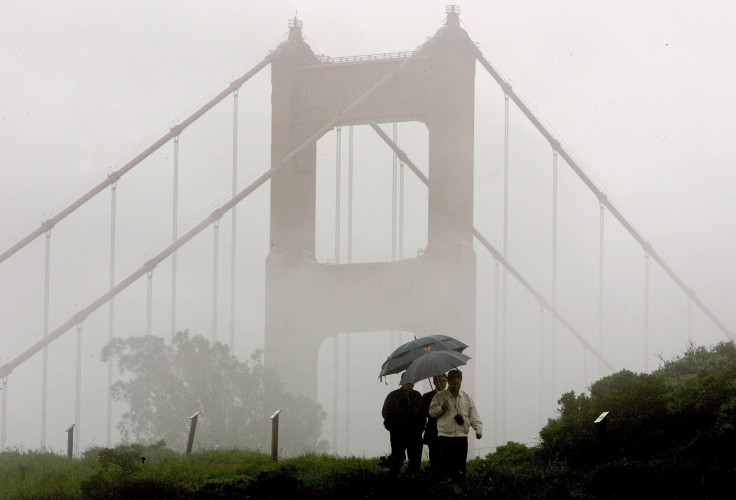What Is An Atmospheric River? Weather Phenomenon Hits California, Nevada With Rain, Snow, Flooding

A not-entirely-unwelcome storm dumped heavy rain on parts of California and Nevada Sunday during part of a weather phenomenon known as an atmospheric river. Another followed close on its tail and was expected to bring up to 15 inches of rain in places like the Sierra Nevada mountains Monday.
Atmospheric rivers are actually common weather patterns that occur all over the world. The term is used to describe narrow portions of the atmosphere that hold water vapor and bring rain, wind and snow as they travel. At any given moment, an atmospheric river is depositing rain or snow somewhere, according to the National Oceanic and Atmospheric Administration. Anywhere between 30 to 50 percent of the annual precipitation that occurs on the West Coast of the United States is caused by atmospheric rivers.
Most atmospheric rivers are weak and pass by unnoticed. The remaining few, like the one that hit California and Nevada, can cause severe damage like flash flooding, collapsed roofs and mudslides. A voluntary evacuation order was in effect Sunday for certain parts of northern California, including for residents who live along Big Sur River. Some 1,300 residents in south Reno, Nevada were encouraged to evacuate, as well.
“STAY HOME UNLESS YOU ARE DIRECTED TO EVACUATE BY EMERGENCY MANAGEMENT. TRAVEL IS STRONGLY DISCOURAGED!” read a warning issued Sunday by the National Weather Service. “This is a serious flood situation. The dangers of flooding are much more difficult to spot at night.” The NWS noted that flash flooding is the number one cause of weather-related death in the U.S.
Clouds/moisture being steered across Arizona from large upper low near 26N/126W. Notice this atmospheric river starts south of Hawaii. #azwx pic.twitter.com/NA61CIM8yS
— NWS Tucson (@NWSTucson) December 28, 2016
California is in the midst of its sixth consecutive year of drought, so the storm’s heavy rains are not without benefits. However, several additional large storms would need to hit the state in order for its groundwater supplies to be replenished, officials told CBS San Francisco.
The last notable atmospheric river occurred in the Mid-Atlantic region in 2010, when a storm dumped up to three feet of snow in places like Philadelphia, Delaware and Maryland and caused severe power outages and travel delays.
© Copyright IBTimes 2024. All rights reserved.












